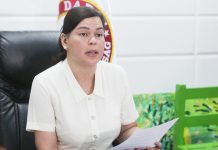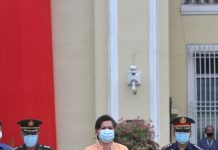Director Maria Lourdes D. Lim of the National Economic and Development Authority Region 11 office discussed the government’s strategies and commitments to secure economic stability at the Philippine Economic Briefing held recently at The Marco Polo Davao.
Lim said these strategies include the implementation of fiscal consolidation and debt sustainability reforms and programs, implementation of macroeconomic policies to encourage private investments and entrepreneurship, provision of adequate and efficient infrastructure in electricity, transport and financing, minimizing corruption and political discord, and improving governance and strengthening institutions through capacity building.
Lim said that from 2001 to 2009, the Philippine economy grew by an average of 4.4 percent, driven primarily by the growth in the services sector. She attributed the surge in services to the deregulation of air transport and communications, massive infrastructure programs, reforms in the financial sector and the strong inflow of overseas Filipino remittances.
She also reported that Davao region’s economy grew at an annual average of 5.2 percent from 2002 to 2008, propelled mainly by the growth in the industry sector, which in turn was spurred by sustained construction and manufacturing activities in the region. According to Lim, policy reforms such as the fiscal consolidation program, inflation targeting, financial reforms and prudent regulation, sector-specific reforms, and infrastructure development played a critical role in paving the way for macroeconomic stability and higher growth during the period.
However, she also cautioned that the world’s economic recovery still remains fragile, and this affects the government’s ability to pursue fiscal targets. In addition, the rise of crude oil prices in the world market may put some pressure on consumer prices, abetted by utility rate hikes. Climatic conditions such as the El Niño; and the recent spending spree to stimulate growth have caused the country to build up fiscal deficits and accumulate public debt; and a stronger recovery of our Asian neighbors would also have a negative impact on the Philippines.
Lim also informed the multisectoral audience that the Philippines was one of the few countries in the world that enjoyed consistently positive GDP quarterly growth rates in 2009 along with China, Vietnam and Singapore. This positive growth was attributed to the government’s timely implementation of accommodative monetary policy and fiscal stimulus package. These include infrastructure spending strategies of frontloading, realigning from slow moving to fast moving projects, implementation of
quick-disbursing projects, implementation of lower corporate tax rates and personal income tax exemptions, implementation of various strategic social programs under the Economic Resiliency Plan (ERP) and the Comprehensive Livelihood and Emergency Employment Program (CLEEP) which provided almost 500 thousand jobs or livelihood assistance nationwide.
In addition, Lim presented the government’s economic pillars, which include establishing a clear policy framework for economic stability, accelerating public investments in infrastructures and addressing food and energy security and environmental sustainability.
In the case of Region XI, Lim mentioned some of RDC 11’s initiatives towards securing economic stability, such as the formulation of a Regional Human Resource Development Action Plan that would improve human resource capacities for the region’s priority cluster industries.
Present during the forum aside from DDG Songco, were Finance Undersecretary Gil Beltran, Energy Undersecretary Mary Rose Magsaysay-Crisostomo, Agriculture Assistant Secretary Preceles Minzo, Trade and Industry Regional Director Marizon Loreto, Budget Director Gisela Lopez, and Bangko Sentral
ng Pilipinas (BSP) Deputy Director Jose Ernesto Gonzales.
0 Comments
Oldest






